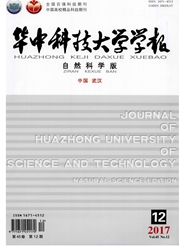

 中文摘要:
中文摘要:
将基于热经济学结构理论和符号[火用]经济学的诊断方法应用于湖南某电厂300MW燃煤机组,利用热力学仿真研究了多个典型的热力设备故障,使用故障/障碍矩阵(或燃料影响表)定量地分析了这些故障对各设备不可逆增加和燃料消耗的影响,弥补了传统[火用]分析技术的不足.通过分析发现:a.某一组件不可逆的增加并不意味着该组件产生了故障,通常是由于其他组件故障在该组件诱导的障碍;b.某一组件的故障除了诱导其他组件产生障碍外,也会引起其他组件性能变化(产生诱导故障);c.该方法能有效缩小故障源的搜索范围,要辨识的真正故障原因必须分离诱导故障.
 英文摘要:
英文摘要:
The diagnostic technique based on the structure theory and symbolic thermoeconomics were applied to a 300MW pulverized coal fired power plant. Several typical malfunctions were analyzed by the thermodynamic simulation. The effects of these malfunctions on the irreversibility increase and fuel consumption in each component were quantitatively analyzed by so-called malfunction/dysfunction matrix (or fuel impact table). This method made up the insufficiencies of the conventional exergy methods. The results showed that: a. The increase of irreversibility might not be caused by the component, but in most cases it was caused by the dysfunctions induced by other components. b. In addition to the dysfunctions induced in other components, an inefficiency in a component can modify the efficiencies in other components and generate induced malfunctions. c. This method can reduce the range of searching the origins of the malfunctions. The induced malfunctions should be separated in order to identify the real causes.
 同期刊论文项目
同期刊论文项目
 同项目期刊论文
同项目期刊论文
 期刊信息
期刊信息
